

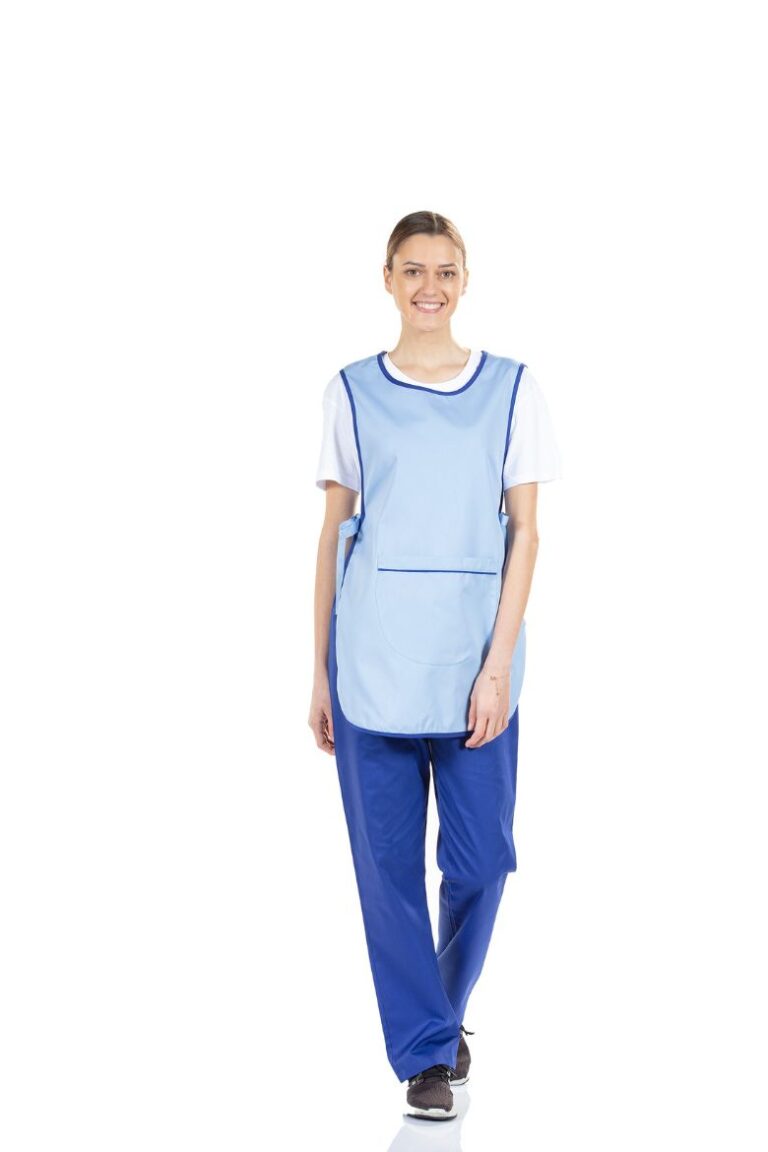
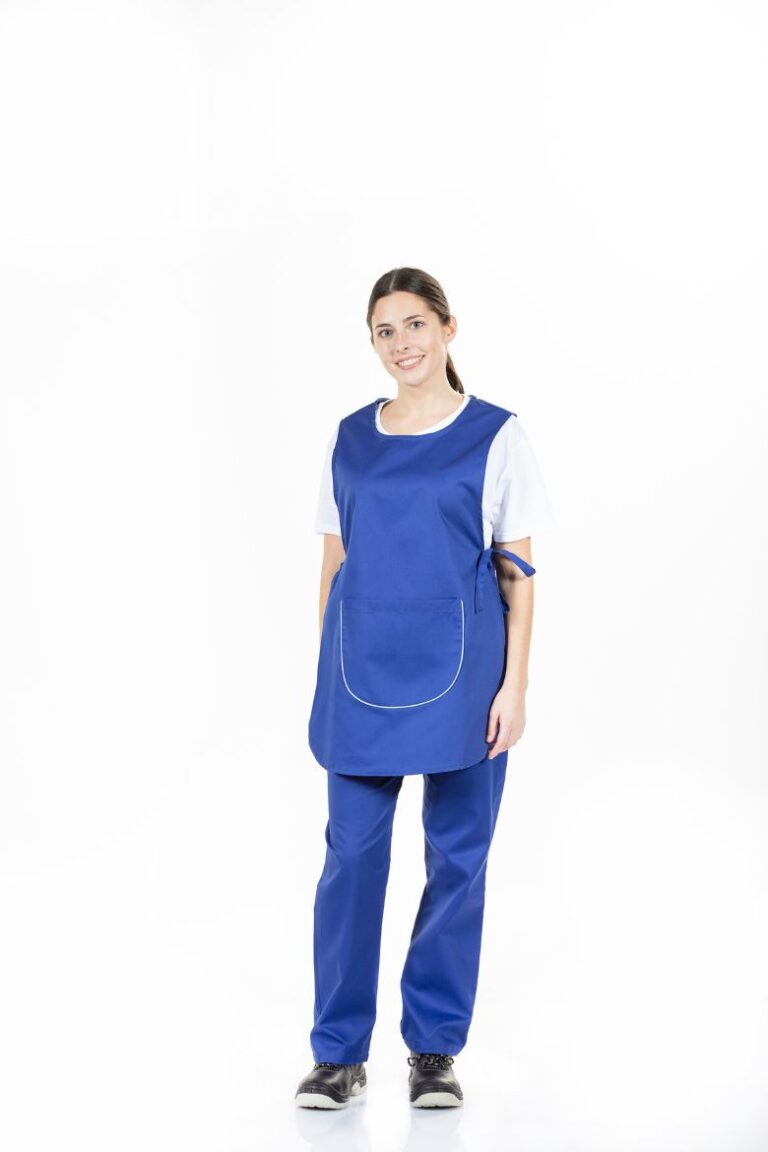
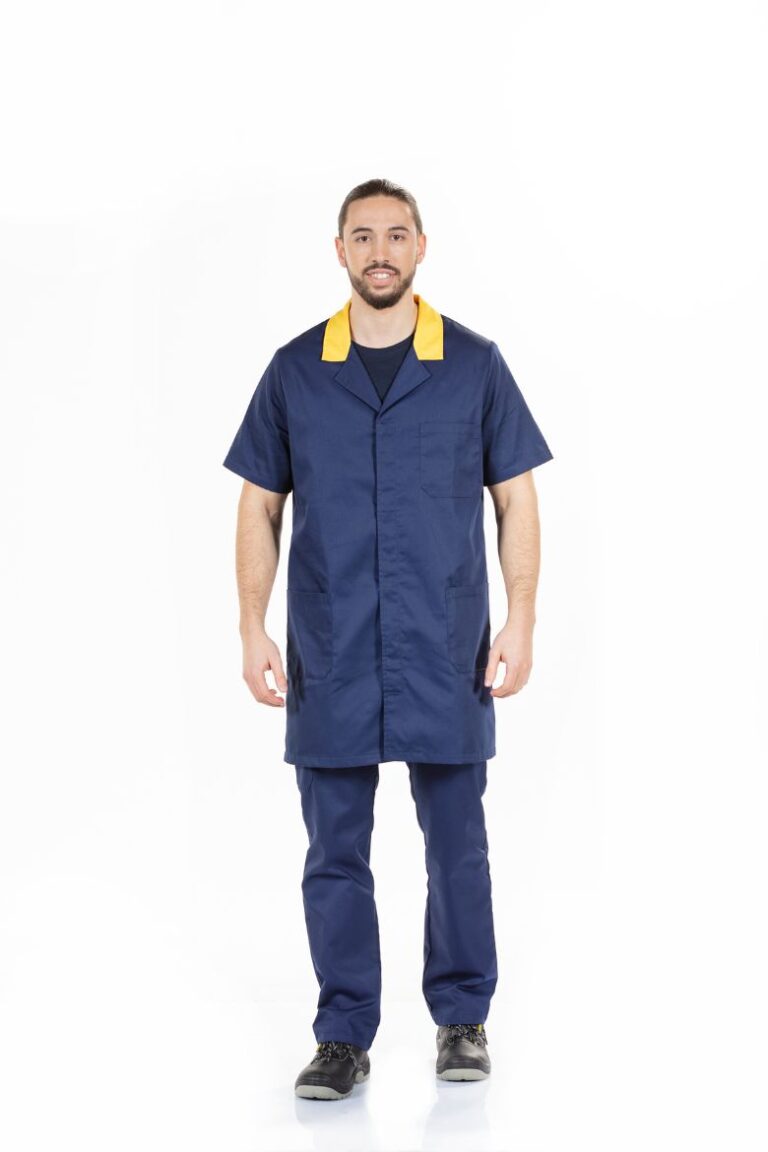
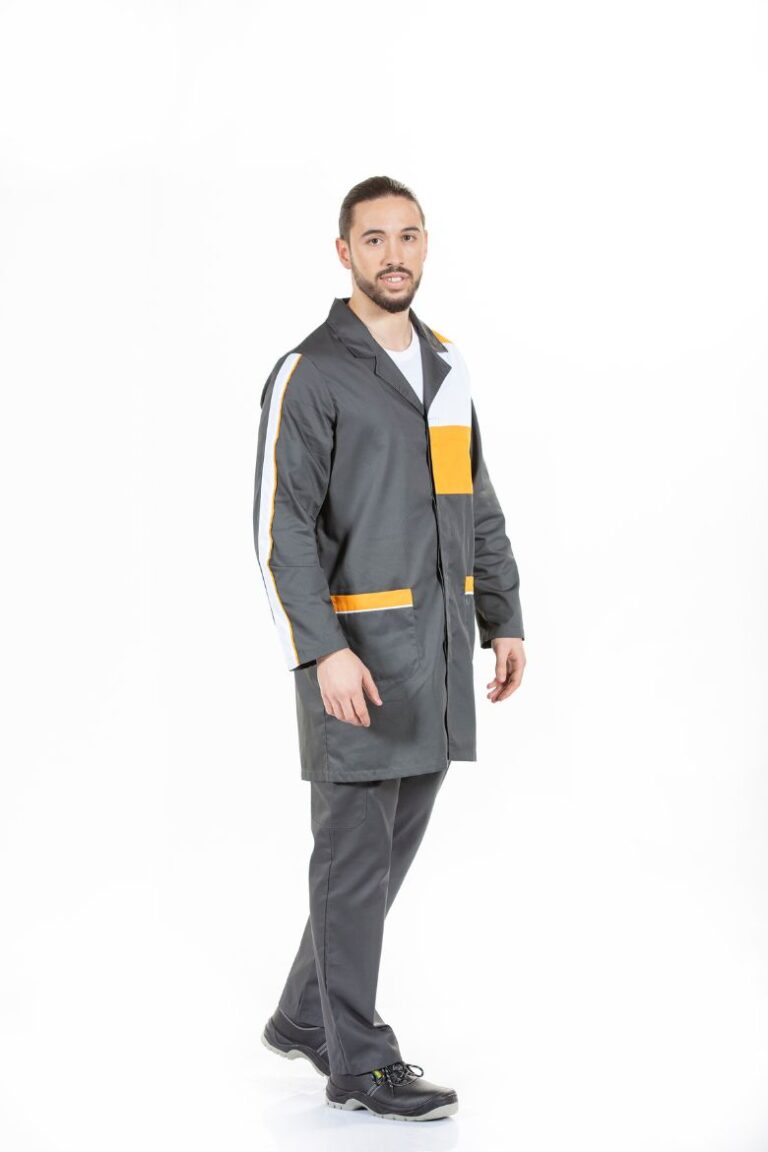
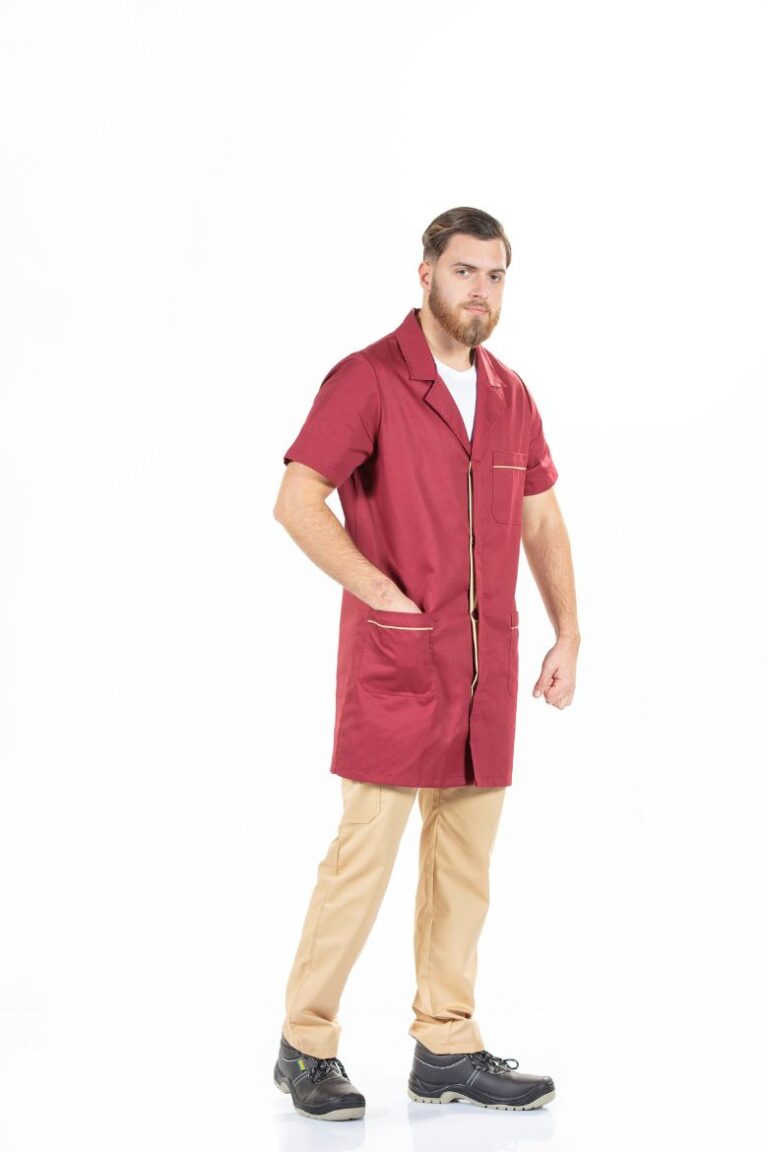
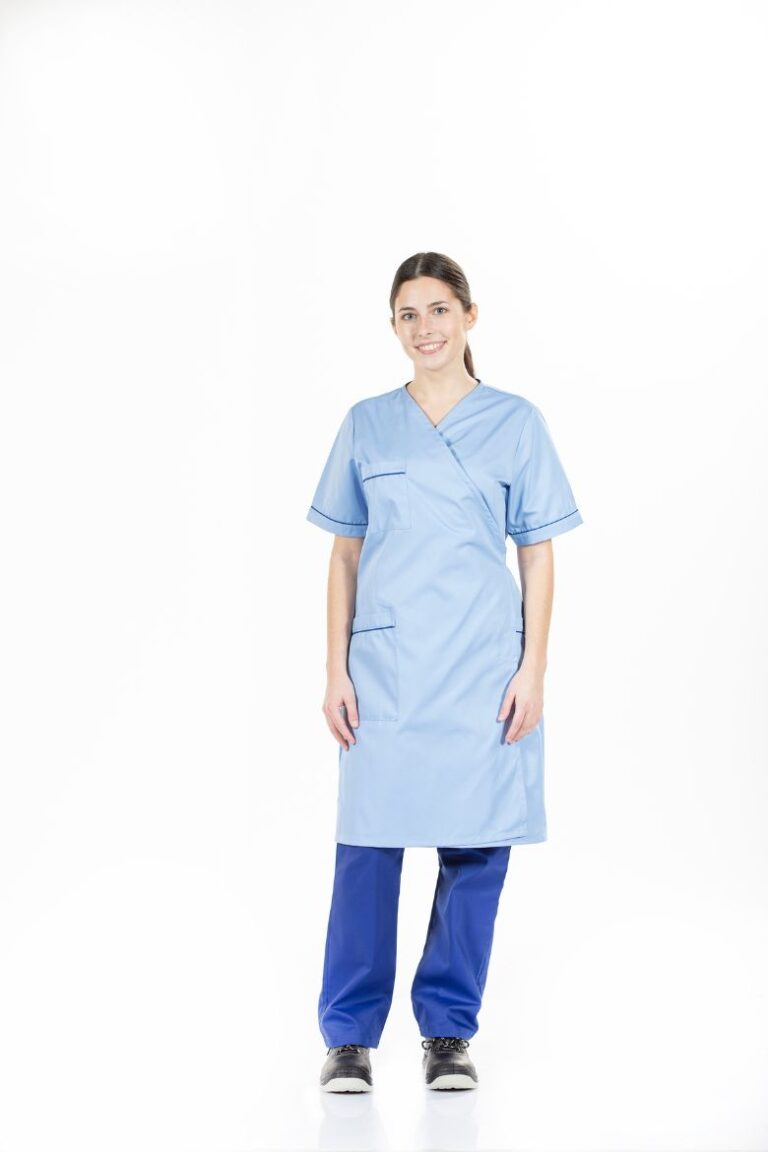
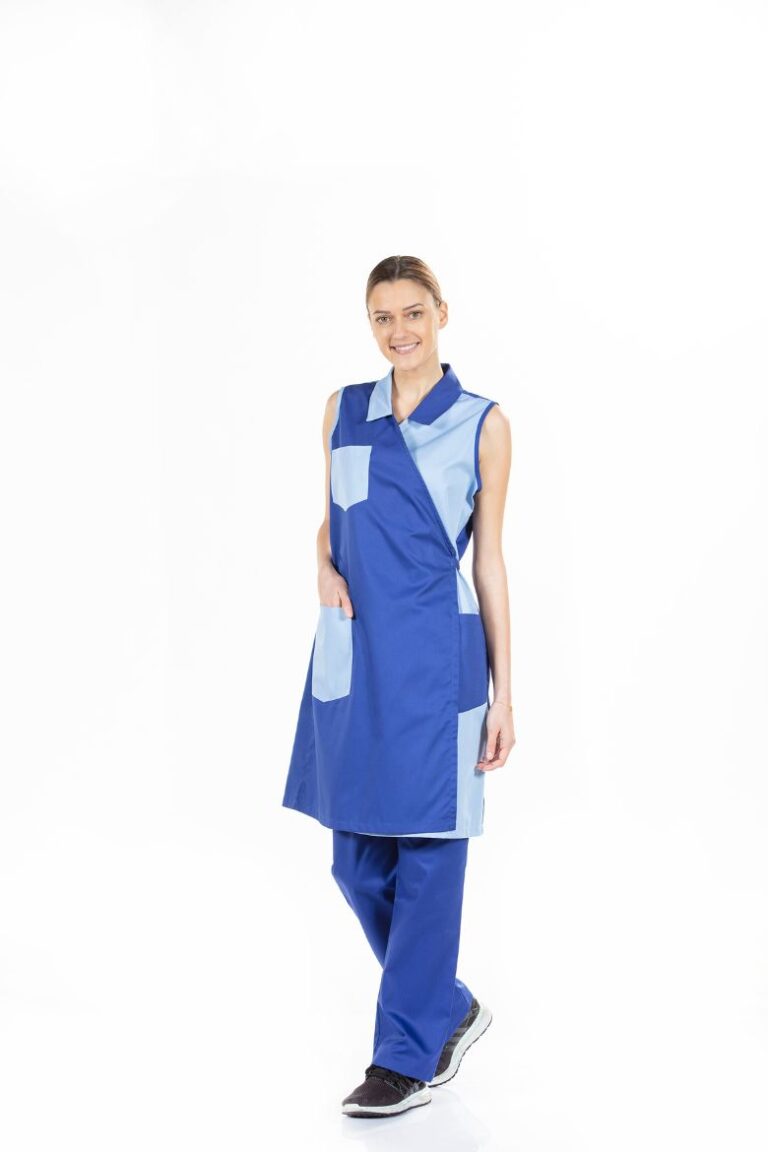
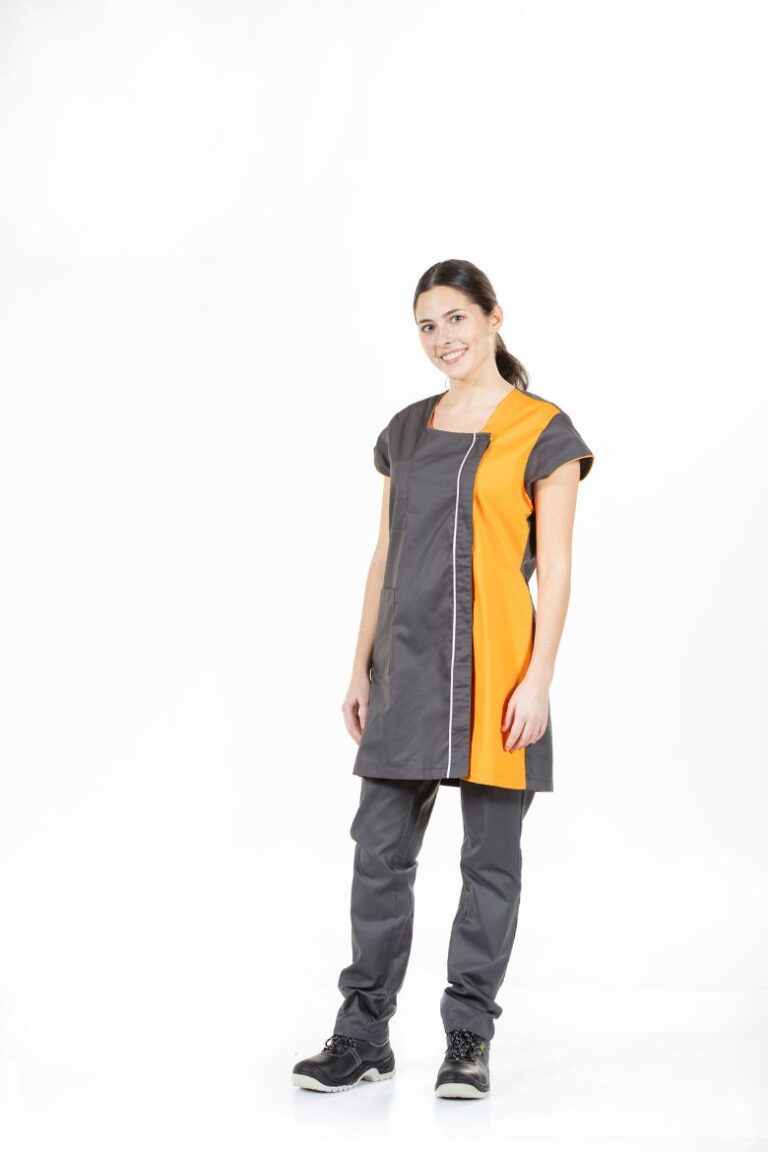
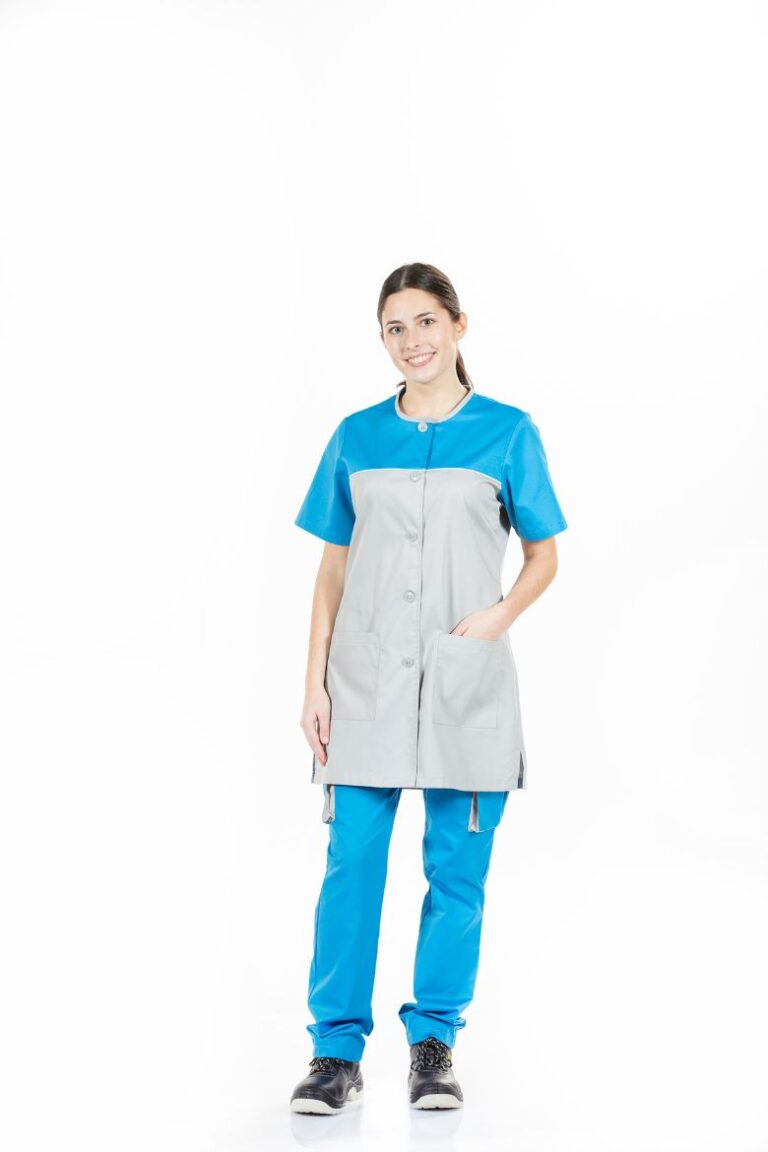
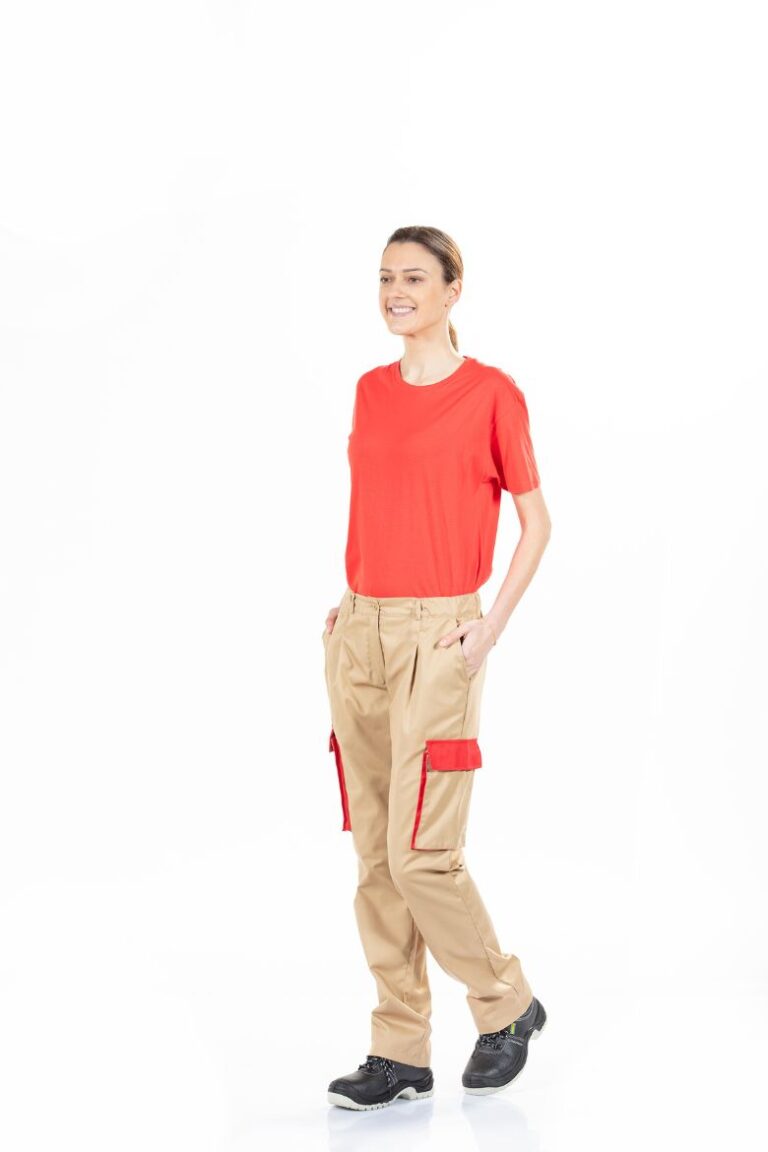
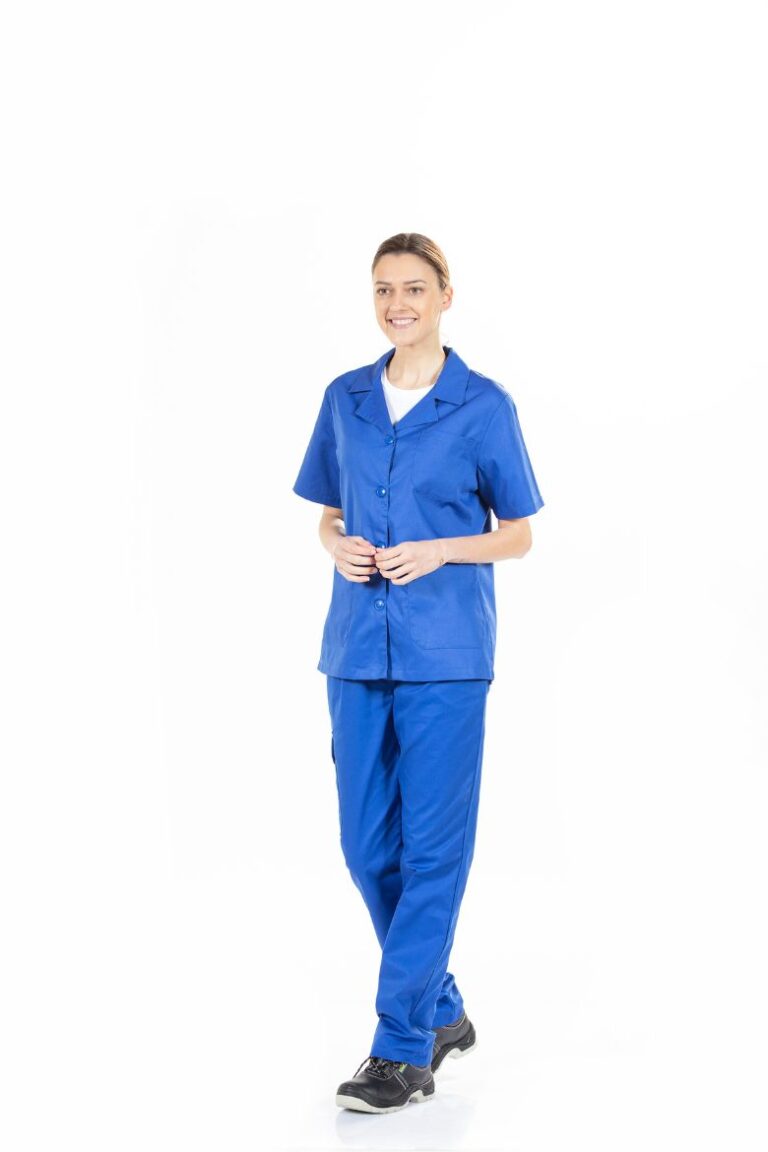
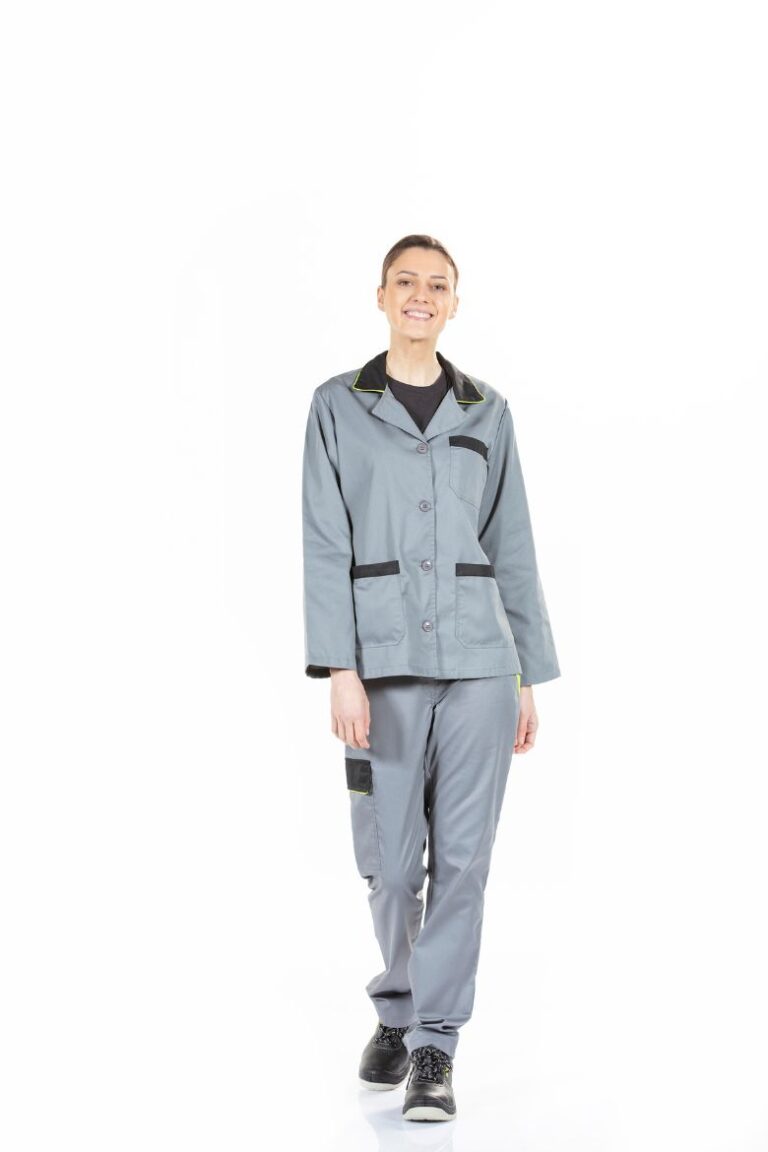
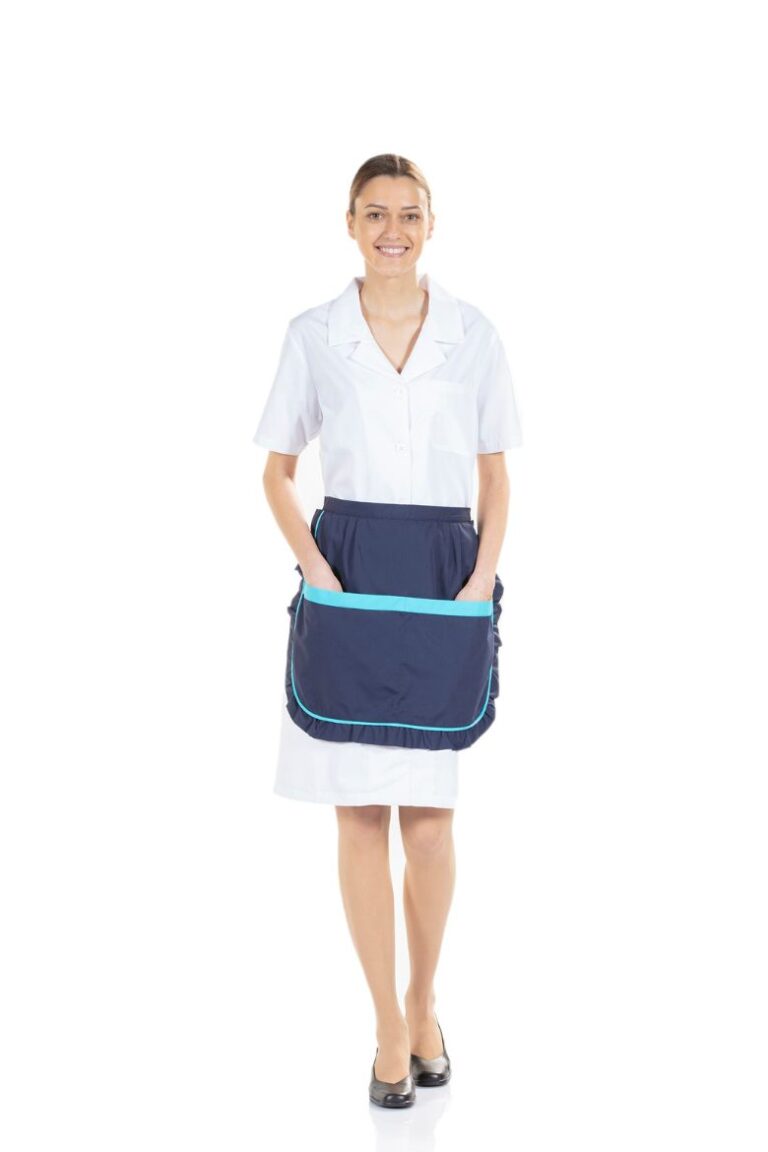
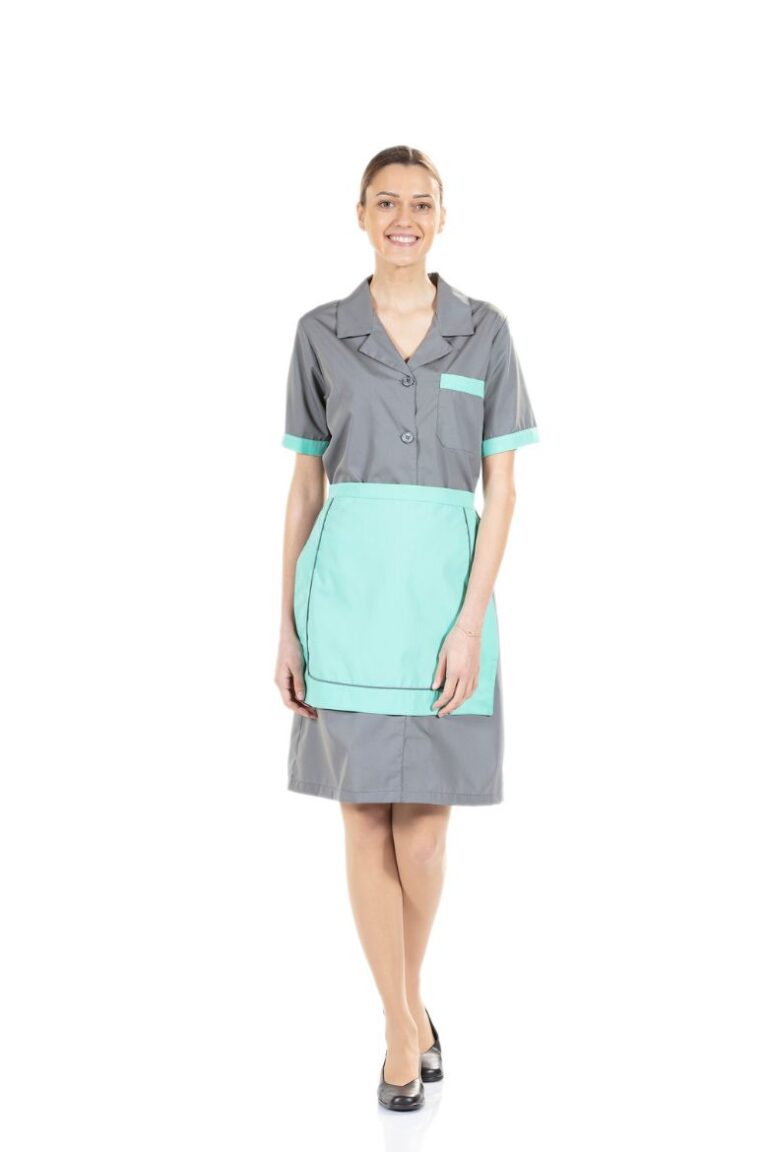
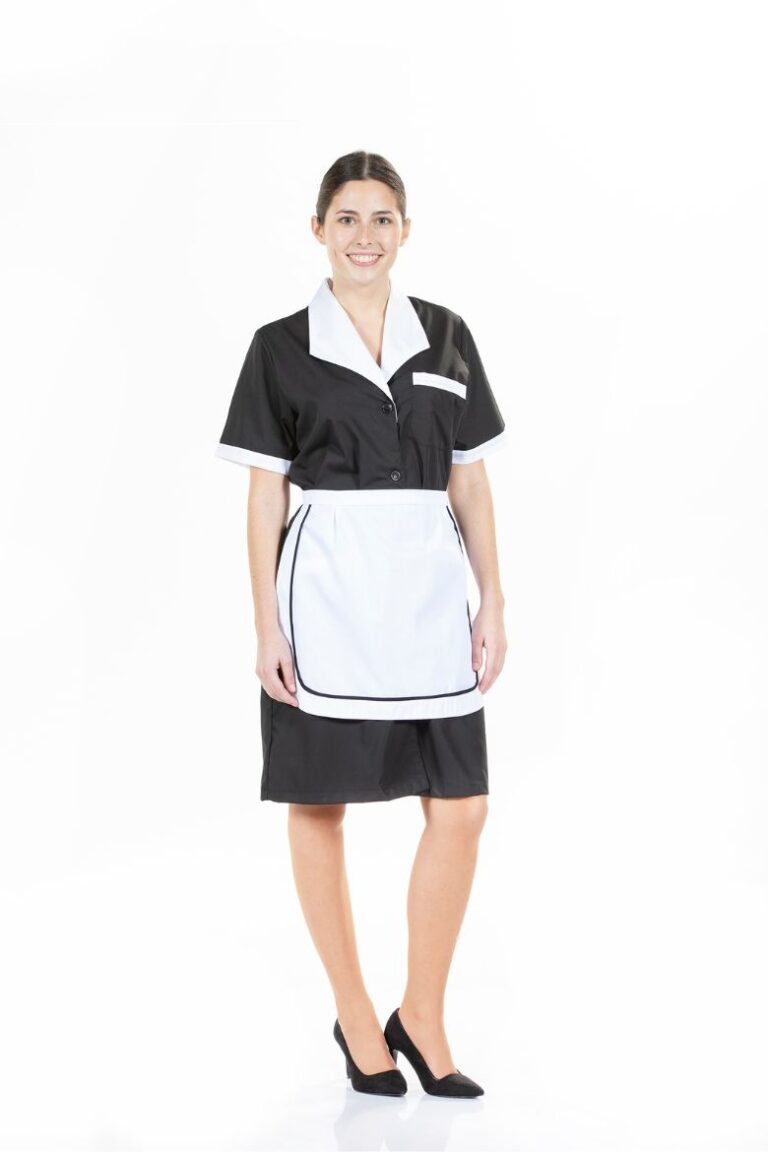
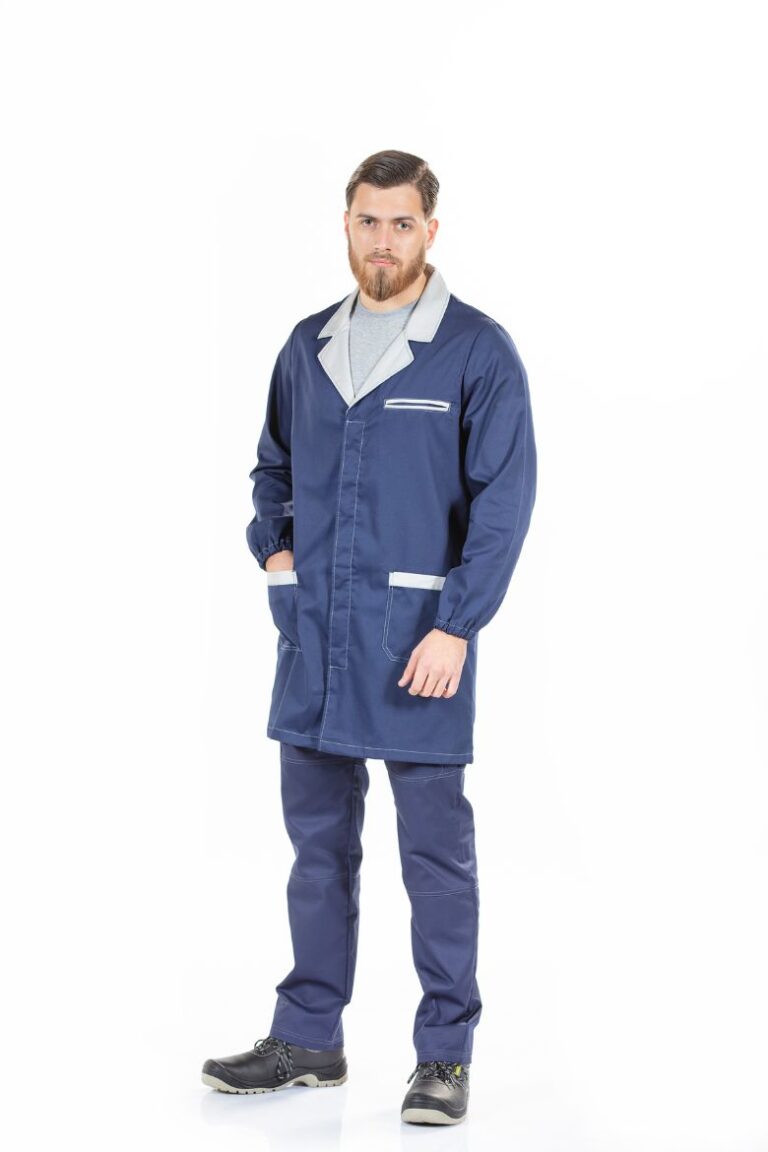
Products with visible prices are those that can be purchased immediately, online, without requiring minimum purchase quantities. This means you can explore our variety of options and purchase exactly what you need, with complete transparency regarding costs and the Professional Apparel model. On the other hand, products without a listed price function as a portfolio of possibilities. These items are highly customizable and can be tailored to each customer's individual specifications. To ensure quality and meet expectations, these products have a minimum order quantity and are subject to a custom quote process.
Cleaning uniforms are important for various reasons, such as: Identification: Cleaning uniforms help identify the staff responsible for cleaning, preventing others from interfering with their work. Hygiene: Cleaning uniforms are designed to be washed frequently, thus helping to maintain a high level of hygiene and cleanliness in the environments where they are used. Protection: Cleaning uniforms are also crucial for protecting employees, as they can be made from materials resistant to chemicals and other cleaning agents. Additionally, some uniforms have reinforced areas, such as knees and elbows, to prevent injuries and premature wear. Professional Image: Cleaning uniforms help create a professional image for the company or organization. They show a commitment to cleanliness and organization, which can increase the trust of clients and employees. Standardization: The use of standardized cleaning uniforms, with specific colors and designs, can aid in organizing the cleaning team and facilitate quality control of the services provided. It can also help identify any potential issues or shortcomings in the cleaning routine. Safety: Some cleaning uniforms are designed to ensure the safety of workers in high-risk environments, such as areas with high heat or flames. In such cases, the uniforms are made from fire-resistant and other protective materials.
There are several types of cleaning uniforms available on the market, each designed to meet the specific needs of cleaning staff and the environments in which they work." "Next, we present some of the main types of cleaning uniforms: Standard Cleaning Uniforms: This is the most common type, generally consisting of pants and a shirt or t-shirt with the company's or organization's logo. It can be made from various materials such as cotton, polyester, and others. Aprons: Cleaning aprons are worn to protect the worker’s clothing from dirt and chemical splashes. Aprons can be made from lightweight and durable fabrics like cotton and polyester. Disposable Uniforms: Disposable cleaning uniforms are an option to prevent cross-contamination and ensure hygiene in the environment. They are made from lightweight, disposable materials. Waterproof Uniforms: Waterproof uniforms are designed for workers dealing with liquids and chemicals that may splash onto their clothing. They are made from waterproof materials such as PVC or nylon. Antistatic Uniforms: Antistatic uniforms are designed for workers handling sensitive electronics and need to avoid static electricity that could damage the equipment. These uniforms are made from materials that do not generate electrical charges, such as polyester or cotton. Safety Uniforms: Safety uniforms are special uniforms that comply with safety standards established for specific sectors, such as chemical or oil industries. They are made from materials resistant to chemicals and other hazardous agents. High-Visibility Uniforms: High-visibility uniforms are designed for workers in dark or low-visibility environments. They are made from reflective and fluorescent materials to ensure the worker’s visibility.
Cleaning is one of the most important activities in any environment, whether residential or commercial. However, industrial cleaning in particular is more challenging and requires a special set of skills and equipment to be carried out effectively. One of the most important tools for any industrial cleaning professional is the cleaning uniform.
The cleaning uniform is a specific type of workwear designed to meet the needs of industrial cleaning professionals. It is made from durable materials that are easy to clean and comfortable to wear, and is designed to provide the wearer with protection while carrying out cleaning tasks. In this section, we will explore in detail the importance of wearing cleaning uniforms in the field of industrial cleaning.
The importance of hygiene and safety at work
Before discussing the importance of cleaning uniforms, it is important to understand the importance of hygiene and safety at work. Industrial cleaning is a job that involves handling chemical products and exposure to dirt and germs. For this reason, cleaning workers are exposed to a number of health risks, including respiratory diseases, dermatitis and allergies.
In addition, industrial cleaning is often carried out in places where there is a large flow of people, such as hospitals, schools and shopping malls. For this reason, hygiene is essential to maintain a healthy and safe environment for everyone involved. Inadequate cleaning can lead to the spread of disease and the contamination of food and surfaces.
The importance of the cleaning uniform
The cleaning uniform plays an important role in promoting hygiene and safety at work. It helps protect the wearer from chemicals, dirt and germs, and helps prevent cross-contamination of clean surfaces with dirty surfaces. In addition, the cleaning uniform also helps to maintain an organized and professional working environment.
User protection
The cleaning uniform is made from durable, chemical-resistant materials, which helps protect the wearer from damage and exposure to dangerous chemicals. In addition, the cleaning uniform helps protect the wearer’s skin from dirt and germs, reducing the risk of dermatitis and allergies.
Prevention of cross-contamination
Cross-contamination is a common problem in industrial cleaning environments. This occurs when a dirty surface is cleaned with the same equipment used to clean a clean surface, which can lead to the transfer of germs. The cleaning uniform helps prevent cross-contamination by providing a physical barrier between the user and the surfaces being cleaned. This helps to ensure that germs and dirt are not transferred from one surface to another.
Maintaining an organized and professional working environment
The cleaning uniform also helps to maintain an organized and professional working environment. By wearing a cleaning uniform, the cleaning worker is easily identifiable and clearly distinguishable from other people in the workplace. This helps to ensure that cleaning work is completed efficiently and professionally.
Types of cleaning uniforms
There are several types of cleaning uniforms available, each with its own characteristics and benefits. Some examples include:
Disposable Cleaning Uniforms: These uniforms are designed for single-use and are made from lightweight materials, such as polypropylene. They are ideal for cleaning tasks that involve hazardous substances or aggressive chemicals, as they provide a protective barrier between the user and the substance.
Reusable Cleaning Uniforms: These uniforms are made from durable materials, such as polyester or cotton, and can be washed and reused multiple times. They are ideal for cleaning tasks that involve less risk of contamination, such as cleaning offices and commercial buildings.
Antimicrobial Treatment Cleaning Uniforms: These uniforms are treated with antimicrobial agents that help prevent the growth of germs and bacteria. They are ideal for work environments that require high levels of hygiene, such as hospitals and food processing facilities.
How to Choose the Right Cleaning Uniform
When choosing a cleaning uniform, it is important to consider several factors, including the type of work to be performed, the level of contamination risk, and personal preference. Some things to consider include:
Material: The most common materials for cleaning uniforms are polyester and cotton. Each material has its own advantages and disadvantages, and the choice of material will depend on the type of work to be performed.
Level of Protection: If the cleaning work involves handling hazardous substances, it is important to choose a uniform that offers good protection against chemicals and other harmful agents.
Comfort: It is important to choose a uniform that is comfortable to wear, especially if the cleaning work involves long hours.
Size: It is important to choose a uniform that is the right size, as this will ensure that it provides adequate protection and is comfortable to wear.
Fardamento à sua medida.
Descubra as nossas
soluções.
Fardamento à sua medida.
Descubra as nossas
soluções.
To subscribe, please enter your e-mail address and click on “Subscribe”.
You can stop receiving our communications by clicking on the link in the footer of any of our newsletters.
Para efetuar a sua subscrição, por favor insira o seu e-mail e clique em “Subscrever”.
Poderá parar de receber as nossas comunicações, ao clicar no link para o efeito encontrado nos rodapés de qualquer uma das nossas Newsletters.
UNIFARDAS® supports Espaço T, which is an inclusive organisation, of all and for all, and our common goal is to increase employment opportunities for young people with special needs and/or who, for some reason, have been excluded from the labour market.
We work hard to provide safe working conditions by going beyond the imposed and mandatory minimums.
We support, nurture and offer continuous training programmes aimed at improving skills.
At UNIFARDAS® we keep up to date with the latest technologies and innovations that can optimise our production process making it more efficient and close to zero waste.
UNIFARDAS® is a partner of Espaço T, an inclusive organisation, of all and for all, with the common goal of increasing employment opportunities for young people with special needs and/or who, for some reason, have been excluded from the labour market. In this organisation, immigrants will also find a support network in finding work and housing.
In addition to the sustainable path we have been taking throughout our production and supply chain, UNIFARDAS® participates, supports and organises a beach clean-up every year after the bathing season, in partnership with World Clean-up Day. We are also partners of Seaqual, an entity that, together with some other partners, promotes the collection of ocean waste and its transformation into upcycled marine plastic that will then be used in the production of fabric and other sustainable products.
In addition to the sustainable path we have been taking throughout our production and supply chain, UNIFARDAS® participates, supports and organises a beach clean-up every year after the bathing season, in partnership with World Clean-up Day. We are also partners of Seaqual, an entity that, together with some other partners, promotes the collection of ocean waste and its transformation into upcycled marine plastic that will then be used in the production of fabric and other sustainable products.